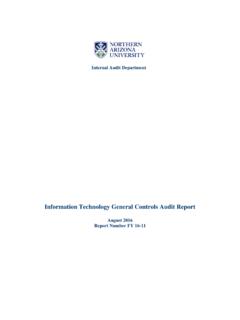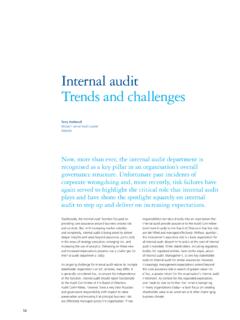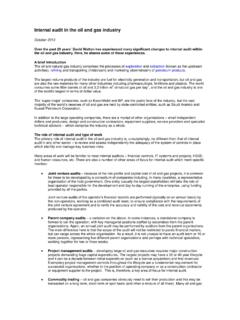Transcription of Case Study in Project Management - PMI
1 1 Enlisting Stakeholder Engagement for Successful Project Delivery - The Case of Jalswarajya ProjectCase A - The Stakeholders and Project ManagementAuthored by Dr. Mona. N. Shah,National Institute of Construction Management and Research, Pune& co-authored by Dr. Gangadhar Mahesh,National Institute of Technology, Karnataka, SurathkalCase Study in Project Management2 Background ..4 The Genesis of Jalswarajya ..4 Project Objectives ..4 Stakeholder Identification ..5 Role of Community Participation in Project Implementation ..6 Selection of District as per Prioritization Criteria at District Level ..8 Stakeholder Communication, Negotiation, Capacity Building Management ..8 Community Stakeholder Communication ..9 Community Negotiation ..9 Community Capacity Building ..9 Involving Stakeholders in Managing the Project ..9 Jalswarajya Project Management Methodology.
2 10 Project Objectives ..10 Project Scope ..10 Project Cost ..10 Jalswarajya s Project Management Principles ..11 Scope Management ..11 Time Management ..11 Human Resource Management ..12 Roles and Responsibilities Chart ..12 Institutional Arrangements and Interrelationships ..12 Project Team ..13 Quality Management ..13 Communication Management ..13 Risk Management ..13 Procurement Management ..14 Stakeholder Management ..14 Jalswarajya Project and Five Process Groups of PMI s A Guide to the Project Management Body of Knowledge ..14 (PMBOK Guide)CONTENTS3 Plan Appraisal and Sanction ..14 Project Implementation Process ..15 Village Level Planning ..15 Community Implementation ..16 Operation and Maintenance ..16 Overall Outcome and Current Status ..16 Community Involvement in Project Phase ..24 Satisfaction Level Based on Outcome ..24 Present Status of Water Supply Scheme.
3 24 Process to Initiate the Jalswarajya Process in a Criteria for Districts ..8 Component Wise Project Cost Estimate ..11 Jalswarajya Sub- Project Cycle ..11 Three-Tier Project Constituents and Structure ..12 Effectiveness of Information Dissemination Strategy ..15 Effectiveness of Negotiation Strategy ..15 Elements of a Project Charter ..17 Note on Water Ladder ..17 Mandatory Priorities that Make Jalswarajya Project Work ..18 Project Non-Negotiables ..18 Roles and Responsibilities Chart of Project Actors in Jalswarajya ..19 Plan Implementation Process ..21 Village Level Planning ..22 Community Implementation Process ..23 Operation and Maintenance ..234 Enlisting Stakeholder Engagement for Successful Project Delivery - The Case of Jalswarajya ProjectCase A - The Stakeholders and Project Management Background In 2000, the Government of Maharashtra, India, brought out a government resolution (GR) stating that Maharashtra will operationalize an innovative community driven approach in water Management in the rural areas.
4 The responsibility of implementation of the Project was assigned to the state s Water Supply and Sanitation Department (WSSD). Until then, the official state arms, namely Maharashtra Jeevan Pradhikaran (MJP) and Zilla Parishad (ZP), had been entrusted with the task of identifying the water and sanitation supply needs of rural communities. According to the GR Village residents had little say in these matters and were also not required to pay for any of these services. At that time, 63,298 villages/habitations ( percent) were fully covered with portable water supply services, 21,521 ( percent) were partially covered, and the remaining 1,494 ( percent) were not covered. In spite of spending over Rs. 166,000 million, 26 percent of the rural habitations at the time did not have assured water supply throughout the year. The majority of the habitations received intermittent water supply exacerbated by government s operations and maintenance machinery not being up to the mark.
5 The situation was worse during summer in when water supply dried up and villages depended on water supplied through tankers. The Genesis of JalswarajyaThe prevailing problems in rural water supply were in the areas of non-participation and lack of capacity building of communities to own and manage the infrastructure, and lack of standardized engineering designs and technology for water Management . This had affected the long-term, sustainable water supply in the villages. The state government decided to adopt the Government of India s Sector Reform Policy that provided guidelines based upon 1) participation of communities 2) driving of the program through Panchayati Raj Institutions (PRIs), and 3) long-term sustainability of services through technical and Management operations by local communities. This was termed and popularly known as the demand driven approach.
6 The Project was formally launched in 2003. Project ObjectivesAccording to the World Bank that partly funded the Project , the development objectives of the Jalswarajya Project were (i) increasing rural households access to improved and sustainable drinking water supply and sanitation services; and (ii) institutionalizing decentralization of rural water supply and sanitation (RWSS) service delivery to rural local governments and communities. 5 The objectives assumed the need for altered priorities centred on the need to build the community and its ability to understand the Project in its entirety. It meant focussing firstly on community development, involvement of women and indigenous people, and their capacity building. It, therefore, required the strengthening of the village panchayat . The second priority involved the construction of the infrastructure for efficient water supply, strengthening of ground water recharge and water supply schemes (such as digging of wells, provision of taps and tanks) and linking of school and sanitation requirements.
7 The third priority focussed on institutional strengthening such as district level capacity building of the human resource in Project Management . It also contained the objectives of ensuring free information flows and the establishment of a non-confrontational approach to problem solving. The fourth objective was to ensure sector development and support such as knowledge Management , policy support, and water quality measurement. Refer Appendix , it was deemed necessary to launch the full scale Project at the village level only after the successful implementation of a pilot Project . The pilot also contained other sub projects in ground water aquifer Management and Operations and Maintenance (O&M) Stakeholder Identification Important stakeholders that were identified in the Project could be classified from the demand and the supply side as followsThe stakeholders from the demand side consisted of: 1.
8 Women: Women were deemed the most important stakeholders and their participation was mandatory for the launch and running of the scheme. Their mainstreaming was ensured through the compulsory presence of a minimum 50 percent quorum of women in gram sabha meetings. The women gram sabha preceded every gram sabha. Furthermore, all the key committees such as the Village Water Supply and Sanitation Committee (VWSC), Beneficiary Level Sub Committee (BLSC) and Social audit Committee (SAC) needed to have at least 50 percent women. 2. Households and Beneficiaries were the primary stakeholders. These included the community of village residents drawn from households Below Poverty Line (BPL), backward classes, scheduled tribes, other marginalized sections, women, and stakeholders from the supply side consisted of: 3.
9 Government departments and the Government of Maharashtra: It is a three tiered system which has the village at the bottom, then the zilla parishad, and finally, the government at the state level. a. Village level- panchayat samitis, talathis, gram sevak, anganwadi sevikas, teachers, watermen, and health workers were instrumental in driving the Project b. Zilla parishad- comprising of the District Water Management and Sanitation Committee (DWMSC), District Facilitation Team (DFT), District Appraisal and Monitoring Team (DAMT), District Financial Management Team (DFMT), the administration wing, zilla parishad office bearers, and other related departmental heads and functionaries were instrumental in driving the Project both at the state and village levels6 c. State level- the Operation and Monitoring Team (OMT) was the most important state level agency that was assigned the responsibility of Project implementation to ensure that stakeholders from the demand and supply sides work together for Project success.
10 The other entities were the state level advisory committee on water resources, WSSD, the Reform Support Monitoring Unit (RSMU), MJP, Groundwater Surveys Development Agency (GSDA), Sector Policy Support Team (SPST), and empowered committee. 4. Community Based Organizations (CBOs), Non Government Organizations (NGOs), Self Help Groups (SHGs): Groups such as mahila mandals (women s organizations), youth mandals (female and male youth clubs), and women s social groups played an active role in community mobilization. 5. Gram sabha and panchayat samiti: While the gram sabha was involved with the cause of participatory decision- making, collective action, and championing the Project , the panchayat samiti was responsible for providing secretarial and monitoring assistance to the gram sabha, VWSC, and Social audit Committee.








